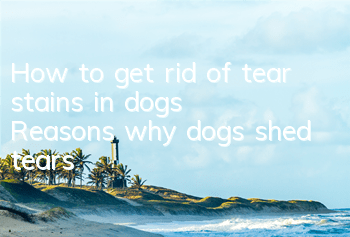Methods and precautions for raising Dachshunds:
Regular exercise should be maintained and it is not advisable to overfeed to avoid obesity. The dog's limbs are short and short, and the body is easily soiled when walking. Therefore, a towel should be used to wipe off the dirt on the body to maintain the luster of the coat. Long-haired breeds need to pay more attention to combing their coats to ensure bright colors. Dachshund's teeth are prone to tartar and should be removed regularly. This dog's spine is very long, so it is not suitable to be trained to jump, nor to pull it up or let it go up and down high-rise stairs by just holding its forelimbs, to avoid spinal displacement or other diseases.
Raising a young long-haired dachshund requires more time and energy, because an 8-week-old puppy needs to be fed four times a day, so someone must take care of it. Adult Dachshunds require more careful care. No matter what the weather is like, you need to take two walks a day for at least 20 minutes each time. They need training, medical care, grooming and lots of petting. They should never be kept at home all day. So if the owner works full time, he must find a responsible person to take care of it.
Long-haired Dachshunds especially enjoy the company of people. Despite its apparent charm, it doesn't need or want any more pampering and is stronger than it appears.
The long-haired Dachshund is the most attractive type. Compared with other types, the long-haired Dachshund requires more care from people and needs to be cleaned 2-3 times a week. But this kind of cleaning work is not so annoying. You just need to arrange a fixed cleaning time and clean it carefully as usual.
If you choose a long-haired Dachshund, grooming should be viewed as fun. Long-haired Dachshunds need to be combed three times a week to prevent their hair from becoming tangled and curled. Most of its fur needs a stiff-bristled brush, while areas with sparse hair can be treated with a comb (such as ears and feet). The hair under the armpits, elbows, belly and behind the ears is most prone to curling, so don't ignore these areas when combing.
After combing the hair, you can use scissors to make the dog's body neater. The hair between the toes can be cut shorter, and the excess hair around the feet can be trimmed to make the feet clear.
Deworming
There are no rules for deworming drugs and time. The most commonly used drug is levamisole. Generally, it is dewormed once after 20 days after the puppy is born, and then for three consecutive days after 30-35 days, and again before 60 days. At present, the following deworming procedures are commonly adopted in the UK, the Netherlands and Hong Kong: first deworming 2 weeks after birth, deworming every 2 weeks from 2 to 8 weeks of age, and monthly deworming from 2 to 6 months old. Deworm once; deworm once every three months after 6 months of age. For dogs that cannot be determined whether to be dewormed at 6 months of age, they should generally be dewormed again after the first time.Once again, and then again every three months.
Adult dogs should be dewormed every three months. The interval can be appropriately lengthened depending on the situation. Levamisole is used to deworm roundworms, arsequinone is used to deworm tapeworms, and metronidazole is used to deworm trichomonas. Different parasites Different anthelmintic drugs should be used to treat worms. Generally, if there are more parasites, certain parasite types can be seen in the dog’s feces. However, trichomonas and coccidia need to be confirmed through microscopic examination, so deworming must be Prescribe the right medicine.
Vaccine
The immunity of puppies is very important. Generally, the puppy is given a two-shot vaccine when it is 28 days old or a multi-shot vaccine is given when it is 45-60 days old. After that, the second and third shots are given every 25-30 days. Multiple vaccine injection. Another way is to give the first dose of multi-linked vaccine on the 50th to 60th day after the puppy is born, the second dose of the multilinked vaccine on the 80th to 90th day of life, and the third dose on the sixth month. Three-shot multiple vaccine injection. The vaccine should not be injected too early, otherwise it will interfere with the maternal immunity of the puppies (except for the two-part vaccine). Vaccine injections with an interval of less than 15 days will cause excessive amounts of virus to accumulate in the puppies and cause serious diseases. as a result of. Adult dogs should be vaccinated once a year, and for dog farms with relatively high breeding density, they should be vaccinated every six months.








